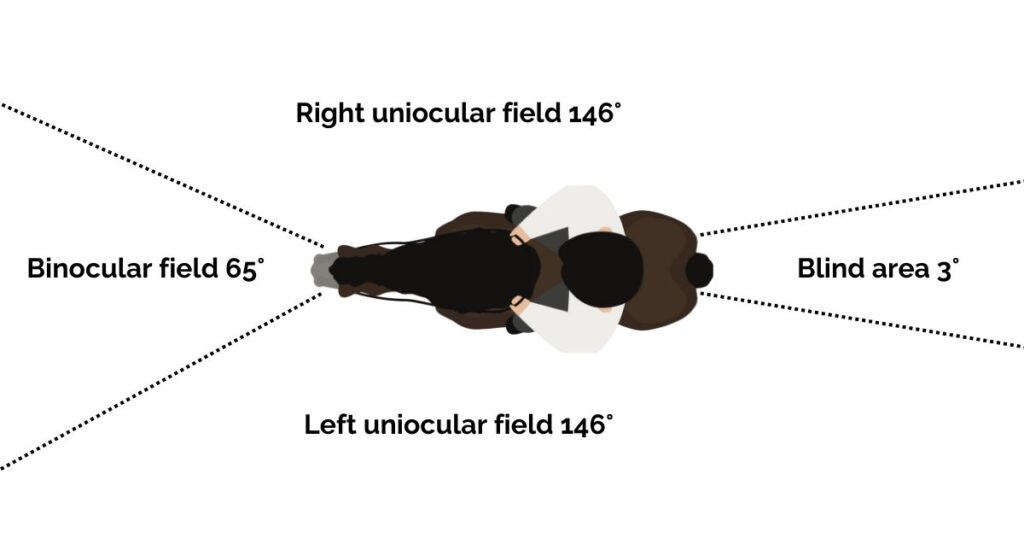Menu

The vision of a horse is quite unique. As is well known, horses can see almost 360 degrees around themselves. But there is a difference in how well the horse sees all the way around. Have you ever thought about that? When you understand how the horse actually sees the world, you might also better understand why the horse reacts as it does if it gets scared of something that has come into its field of vision but which it may not yet see clearly.
The horse's field of vision is partly binocular and partly monocular. This means that it sees some of the world with two eyes, while other parts are perceived with only one eye. The binocular vision, which consists of both of the horse's eyes, is sharp and can easily judge distance. However, the two monocular fields of vision are more blurred and are primarily able to detect movement. We have tried to illustrate this for you in the drawing here.
The inverted triangle, which says "Horse," is meant to illustrate the horse's body. The arrow above illustrates the direction of sight. The area marked behind the horse is blind. In addition, it should be added that the horse is not able to see things below its head. Therefore, it has whiskers to feel what is under its head, like blades of grass and water.

As you can see, only a small part of the horse's total field of vision is binocular. It is about 65 degrees. This field of vision is roughly as sharp as we know from our own sight. The rest of the horse's field of vision is monocular. Because it can only see what is happening around it with one eye, it will often be startled if something suddenly comes into its field of vision. Only when you have turned the horse around or perhaps turned its head, so its binocular field of vision can register it, will your horse actually be able to see what it is.
The most debated question must be whether the horse is able to see colors. And the answer must be a moderate yes. They can indeed see some colors, but not to the same extent as us humans. We are so-called trichromats, which means that we can perceive and distinguish between the three primary colors red, yellow, and blue – and mixtures thereof. Horses, on the other hand, are dichromats, which means that they have a smaller color scale to perceive the world from. Therefore, horses see the world in more grayish shades than humans, but definitely not in black and white. Moreover, it has been proven that horses see better than humans in the dark, but worse than humans in daylight.
In the video below, you can see how your horse – most likely – sees the world around it. It was made by a French horse center that works with horsemanship. If you believe the video, it is quite clear how the outermost part of the horse's field of vision is blurred but becomes sharper and sharper the more centered you look. At the top of the video, you can see how it all looks somewhat more colorful for a rider. Do you also think that your horse sees the world like this?